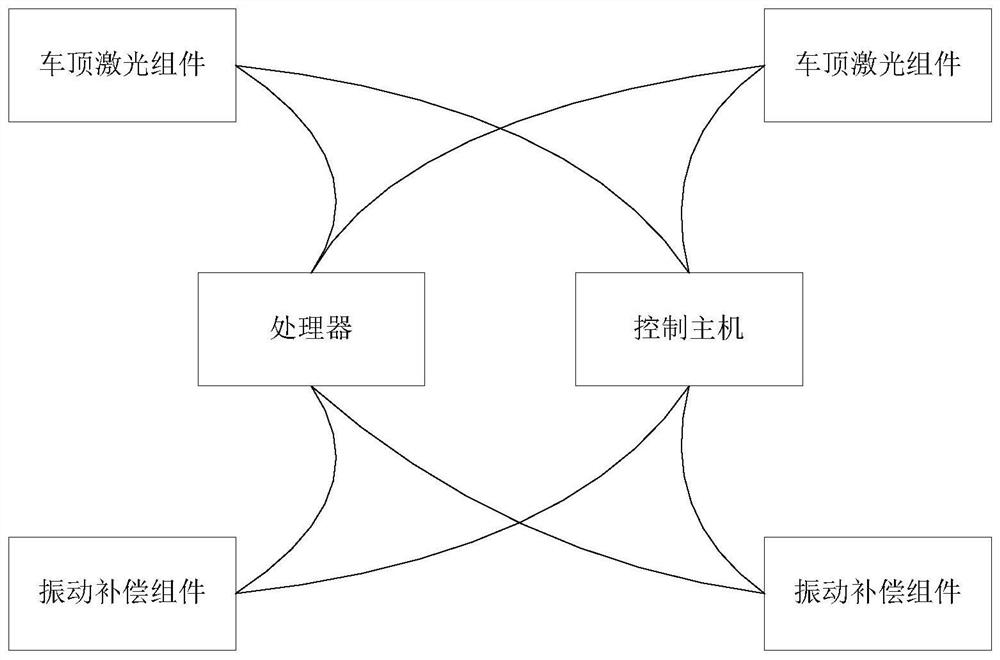Non-contact detection system and detection method for overhead lines
A non-contact detection system technology, applied in the field of pantograph-catenary detection, can solve the problems of inaccurate mechanical installation, increase the weight of the pantograph, increase the error, etc., achieve strong anti-interference ability, improve detection accuracy, reduce The effect of small vibration disturbances
- Summary
- Abstract
- Description
- Claims
- Application Information
AI Technical Summary
Problems solved by technology
Method used
Image
Examples
Embodiment 1
[0043] This embodiment provides a non-contact detection system for catenary, such as figure 1 shown, including:
[0044] The roof laser component is used to install on the roof, measure and obtain the roof detection data, and transmit the roof detection data to the processor. The roof detection data includes the height and lateral offset of the catenary relative to the laser component;
[0045] The vibration compensation component is used to install on the bottom of the car, measure and obtain the bottom compensation data, and transmit the bottom compensation data to the processor. The bottom compensation data includes the position deviation between the center of the car body and the center of the track and the height of the car body and the track Difference;
[0046] a processor for calculating the geometric parameters of the catenary according to the vehicle roof detection data and the vehicle bottom compensation data;
[0047] The control host is used to provide synchroni...
Embodiment 2
[0053] As an optimization of the above embodiments, this embodiment provides a non-contact detection method for catenary, such as image 3 shown, including the following steps:
[0054] S101. Obtain vehicle roof detection data and vehicle bottom compensation data synchronously. The control host can control the roof laser component and the vibration compensation component for synchronous data acquisition, and obtain the corresponding roof detection data and vehicle bottom compensation data. The reason why synchronous data is obtained is to eliminate compensation errors caused by data out-of-synchronization, so as to improve detection accuracy.
[0055] S102. Calculate and obtain the initial guide height and initial pull-out value of the catenary according to the detection data of the vehicle roof. When installing the roof laser component, the set position of the roof laser component is the reference position, and the height and lateral offset of the catenary relative to the l...
PUM
 Login to View More
Login to View More Abstract
Description
Claims
Application Information
 Login to View More
Login to View More - R&D
- Intellectual Property
- Life Sciences
- Materials
- Tech Scout
- Unparalleled Data Quality
- Higher Quality Content
- 60% Fewer Hallucinations
Browse by: Latest US Patents, China's latest patents, Technical Efficacy Thesaurus, Application Domain, Technology Topic, Popular Technical Reports.
© 2025 PatSnap. All rights reserved.Legal|Privacy policy|Modern Slavery Act Transparency Statement|Sitemap|About US| Contact US: help@patsnap.com



